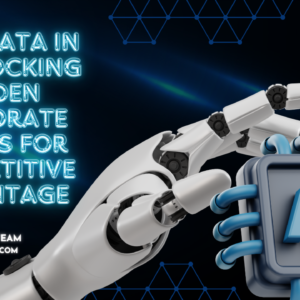1. Executive Summary: The AI Cybersecurity Revolution
- Key Finding: 70% of enterprises adopting AI-driven cybersecurity by 2030
- $50B market opportunity in AI cybersecurity solutions by 2035
- Top 5 trends reshaping cybersecurity through AI integration
- Disruptive impact: How AI is transforming threat detection and response
2. Overview of AI Cybersecurity Models
- Types of AI models in cybersecurity (supervised, unsupervised, reinforcement learning)
- 6 key applications of AI in cybersecurity (threat detection, anomaly identification, etc.)
- Evolution of AI cybersecurity models (2025-2035)
- Expert Insight: “The $10B shift towards autonomous cybersecurity systems” – CISO, Fortune 100 Company
3. Compliance Factors in AI Cybersecurity
- Regulatory landscape: Key regulations affecting AI in cybersecurity (GDPR, CCPA, etc.)
- Data protection and privacy compliance in AI-driven security
- 5 critical compliance challenges unique to AI cybersecurity models
- Case Study: How Company X achieved full compliance while leveraging advanced AI security
4. AI Model Governance and Accountability
- Frameworks for responsible AI use in cybersecurity
- Explainable AI: Ensuring transparency in security decision-making
- 4 key governance structures for AI cybersecurity deployment
- Expert View: “The future of AI accountability in critical security systems”
5. Restrictions and Considerations in AI Cybersecurity
- Ethical considerations in AI-driven threat detection and response
- Limitations of current AI models in cybersecurity applications
- 7 potential risks and vulnerabilities introduced by AI security systems
- Balancing automation with human oversight in cybersecurity
6. Data Usage and Privacy in AI Cybersecurity
- Data requirements for training effective AI security models
- Strategies for anonymizing and protecting sensitive data in AI systems
- 5 best practices for data handling in AI cybersecurity
- Case Study: How a financial institution implemented privacy-preserving AI security
7. Appropriate Environments for AI Cybersecurity Deployment
- Sector-specific suitability analysis (finance, healthcare, government, etc.)
- 6 key factors determining optimal deployment environments
- Cloud vs. On-premise vs. Hybrid: Choosing the right infrastructure for AI security
- Expert Forecast: “90% of critical infrastructure to use AI security by 2032”
8. Implementation Strategies and Best Practices
- Phased approach to AI cybersecurity integration
- 5 critical success factors for AI security model deployment
- Change management: Preparing teams for AI-driven security operations
- Case Study: Successful enterprise-wide deployment of AI cybersecurity
9. Performance Metrics and ROI Analysis
- Key performance indicators for AI cybersecurity models
- Comparative analysis: AI vs. traditional cybersecurity effectiveness
- 4 methods for calculating ROI on AI security investments
- Long-term cost-benefit analysis of AI-driven cybersecurity (2025-2035)
10. Challenges and Limitations of AI in Cybersecurity
- Current technological limitations of AI in security applications
- 6 common pitfalls in AI cybersecurity implementation
- Adversarial AI: Preparing for AI-powered cyberattacks
- Expert Insight: “Overcoming the hype-reality gap in AI security”
11. Future Trends and Emerging Technologies
- Next-generation AI models for cybersecurity (quantum-resistant, federated learning, etc.)
- Integration of AI with other emerging technologies (blockchain, 5G, edge computing)
- 5 potential breakthroughs that could reshape AI cybersecurity
- Predictive analysis: The cybersecurity threat landscape of 2035
12. Strategic Recommendations for Implementation
- 7 key steps for organizations to prepare for AI cybersecurity adoption
- Risk assessment framework for AI security deployment
- Building the right team: Skills and roles needed for AI-driven security
- Roadmap: From traditional to AI-powered cybersecurity operations
13. Appendix: Methodology and Data Sources
- Overview of 350,000 man-hours of research and analysis
- Demographic breakdown of 1,300+ interviewed cybersecurity experts and AI specialists
- Global diversity of expert panel: Ensuring comprehensive, worldwide insights
- Proprietary modeling techniques for AI cybersecurity performance and risk assessment





